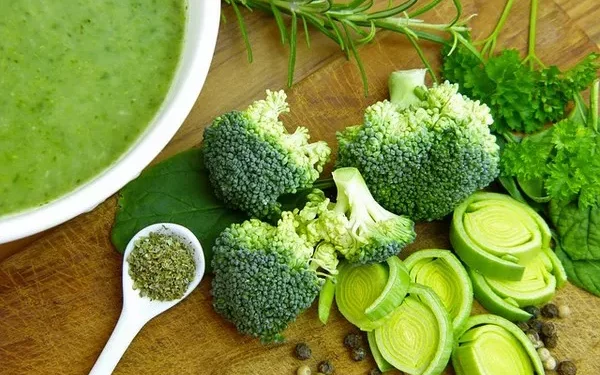Managing blood sugar levels is a critical part of living with diabetes. While medication and exercise play essential roles in maintaining optimal glucose control, your diet is perhaps the most powerful tool in regulating blood sugar. Knowing what foods to choose—and what to avoid—can make a significant difference in your ability to manage diabetes and prevent complications over time.
In this article, we’ll discuss the types of foods that help keep blood sugar levels stable and reduce the risk of spikes and dips. We’ll also dive into specific meal strategies, focusing on foods with a low glycemic index, balanced nutrient profiles, and beneficial effects on insulin sensitivity.
Understanding Blood Sugar and Its Regulation
Blood sugar, also known as glucose, is the primary source of energy for the body’s cells. Insulin, a hormone produced by the pancreas, helps regulate the levels of glucose in the bloodstream. For individuals with diabetes, insulin either isn’t produced in sufficient amounts (Type 1 Diabetes) or the body becomes resistant to its effects (Type 2 Diabetes), leading to elevated blood sugar levels.
To keep blood sugar in check, it’s important to maintain a balance between glucose intake, insulin function, and the body’s natural metabolic processes. Foods that are high in refined sugars or simple carbohydrates can cause rapid spikes in blood glucose, while foods that are high in fiber, healthy fats, and lean proteins can help stabilize blood sugar levels.
The Importance of the Glycemic Index (GI)
The Glycemic Index (GI) is a ranking of carbohydrates based on how they affect blood sugar levels. Foods with a high GI cause a rapid increase in blood sugar, while foods with a low GI result in a slower, more gradual rise. For people with diabetes, the goal is to choose foods with a low to moderate GI, as they promote better blood sugar control and insulin sensitivity.
Here is a basic breakdown of how the GI system works:
Low GI Foods (55 or less): These foods cause a slow and steady rise in blood sugar. Examples include whole grains, legumes, non-starchy vegetables, and most fruits.
Medium GI Foods (56-69): These foods cause a moderate increase in blood sugar. Examples include certain whole grain products and some fruits like pineapples.
High GI Foods (70 or more): These foods cause rapid spikes in blood sugar. Examples include sugary beverages, refined bread, and processed snacks.
When choosing what to eat, it’s best to focus on low to moderate GI foods, as they are less likely to cause dramatic fluctuations in blood sugar levels.
Key Nutrients for Blood Sugar Control
When trying to maintain healthy blood sugar levels, it’s not just about the GI of foods. The overall nutrient profile of your meals is equally important. Here’s a look at the key nutrients that support blood sugar regulation:
Fiber: Fiber slows down the absorption of sugar in the bloodstream, helping to prevent blood sugar spikes. High-fiber foods, especially those high in soluble fiber, can also improve insulin sensitivity and reduce the risk of Type 2 Diabetes.
Healthy Fats: Unsaturated fats from sources like avocados, olive oil, and nuts help slow digestion and stabilize blood sugar levels. Omega-3 fatty acids, found in fatty fish, have also been shown to improve insulin sensitivity.
Protein: Protein-rich foods help promote satiety, stabilize blood sugar, and reduce hunger, preventing overeating. Choosing lean proteins, such as poultry, fish, legumes, and tofu, can provide a steady energy supply without spiking blood glucose levels.
What Should You Eat to Keep Your Blood Sugar Normal?
Here, we’ll break down specific food groups and discuss which foods are best for stabilizing blood sugar. We’ll also provide helpful meal planning tips to make healthy eating easier and more sustainable.
1. Non-Starchy Vegetables
Non-starchy vegetables are among the best choices for managing blood sugar. These vegetables are low in calories and carbohydrates but packed with fiber, vitamins, and minerals. Due to their high fiber content, they have a low glycemic index, meaning they won’t cause rapid increases in blood sugar levels.
Top non-starchy vegetables to include in your diet:
- Spinach, kale, and other leafy greens
- Broccoli, cauliflower, and Brussels sprouts
- Cucumbers, bell peppers, and zucchini
- Asparagus, green beans, and peas
- Tomatoes and eggplant
These vegetables can be eaten raw, cooked, or blended into smoothies. Incorporating a wide variety of non-starchy vegetables in your meals is an excellent way to keep your diet rich in antioxidants and fiber, both of which help support blood sugar regulation.
2. Whole Grains and Legumes
Whole grains and legumes are good sources of complex carbohydrates, which break down slowly in the digestive system and provide a steady release of glucose into the bloodstream. Unlike refined grains, which are quickly digested and cause rapid spikes in blood sugar, whole grains contain more fiber and nutrients, making them ideal for blood sugar control.
Top whole grains for blood sugar control:
- Quinoa, brown rice, and oats
- Barley and farro
- Buckwheat and millet
Top legumes to include in your diet:
- Lentils, chickpeas, and kidney beans
- Black beans, pinto beans, and navy beans
These foods not only help maintain blood sugar levels, but they are also excellent sources of protein and fiber, which contribute to overall satiety and digestive health.
3. Berries and Low-Glycemic Fruits
Fruits, in general, can be a bit tricky for diabetics since many fruits are high in sugar and have a relatively high glycemic index. However, some fruits, especially berries, are low in sugar and packed with antioxidants that can help manage inflammation and oxidative stress, which are often associated with diabetes.
Best fruits for blood sugar regulation:
- Blueberries, strawberries, raspberries, and blackberries
- Apples (especially Granny Smith)
- Pears and peaches
- Plums and cherries
These fruits are high in fiber, which helps slow the absorption of sugar into the bloodstream. When consuming fruit, it’s best to focus on fresh, whole varieties, rather than fruit juices or dried fruit, which tend to have higher sugar concentrations.
4. Lean Proteins
Protein is a crucial nutrient for blood sugar regulation because it helps stabilize glucose levels by promoting satiety and reducing the likelihood of overeating. Additionally, proteins help maintain muscle mass, which is important for metabolic function and insulin sensitivity.
Top lean proteins to include in your diet:
- Skinless poultry (chicken, turkey)
- Fish and seafood (salmon, mackerel, sardines)
- Plant-based proteins (tofu, tempeh, edamame)
- Eggs and low-fat dairy products (Greek yogurt, cottage cheese)
When choosing protein sources, try to incorporate a variety of options, including plant-based proteins that are rich in fiber and healthy fats.
5. Healthy Fats
Incorporating healthy fats into your diet helps improve insulin sensitivity, reduce inflammation, and support overall blood sugar regulation. Unsaturated fats, such as those found in avocados, olive oil, and nuts, are particularly beneficial for individuals with diabetes.
Healthy fats to include in your diet:
- Avocados and olive oil
- Nuts and seeds (almonds, walnuts, chia seeds, flaxseeds)
- Fatty fish (salmon, mackerel, sardines)
These fats help slow down digestion and reduce the rate at which sugar enters the bloodstream, making them essential for stable blood sugar levels.
6. Dairy Alternatives
For individuals who have difficulty digesting dairy or are trying to avoid animal-based products, there are plenty of plant-based dairy alternatives that are suitable for blood sugar management.
Best dairy alternatives for diabetics:
- Unsweetened almond milk or soy milk
- Greek yogurt (unsweetened) or coconut yogurt
- Plant-based cheeses (low-sodium, non-dairy options)
Look for dairy alternatives that are unsweetened to avoid added sugars that can raise blood glucose levels.
Meal Planning Tips for Managing Blood Sugar
Managing blood sugar through diet involves more than just selecting the right foods—it’s also about how you structure your meals. Below are some helpful meal planning tips to keep your blood sugar levels normal throughout the day:
Balance Your Meals: Each meal should include a combination of protein, healthy fats, fiber-rich vegetables, and low-GI carbohydrates. This balance helps slow the absorption of sugars into the bloodstream and prevents blood sugar spikes.
Control Portions: Even healthy foods can raise blood sugar levels if eaten in large quantities. Pay attention to portion sizes, especially when consuming carbohydrate-rich foods like grains and fruits.
Eat Regularly: Avoid skipping meals or going too long without eating. This can cause fluctuations in blood sugar levels and may lead to overeating later. Aim to have three balanced meals a day with healthy snacks if needed.
Choose Whole, Unprocessed Foods: Minimize the intake of processed foods, which often contain hidden sugars and unhealthy fats. Opt for whole, unprocessed foods that are naturally rich in fiber, vitamins, and minerals.
Stay Hydrated: Drinking plenty of water throughout the day helps maintain hydration and supports overall metabolic function. Avoid sugary drinks like soda, which can lead to spikes in blood sugar.
Conclusion
Maintaining normal blood sugar levels is crucial for preventing the long-term complications of diabetes. By focusing on whole, unprocessed foods, balancing meals, and choosing low-GI options, you can keep your blood sugar stable and support overall health.
Remember, every individual is unique, so it’s essential to monitor how specific foods affect your blood sugar and adjust your diet accordingly. Always consult with a healthcare provider or a registered dietitian to develop a personalized meal plan that works best for your needs.
Incorporating these dietary strategies into your daily routine will not only help regulate blood sugar levels but also support your long-term health and well-being.
Related topics:
What’s the Normal Set Point for Blood Glucose Levels



























